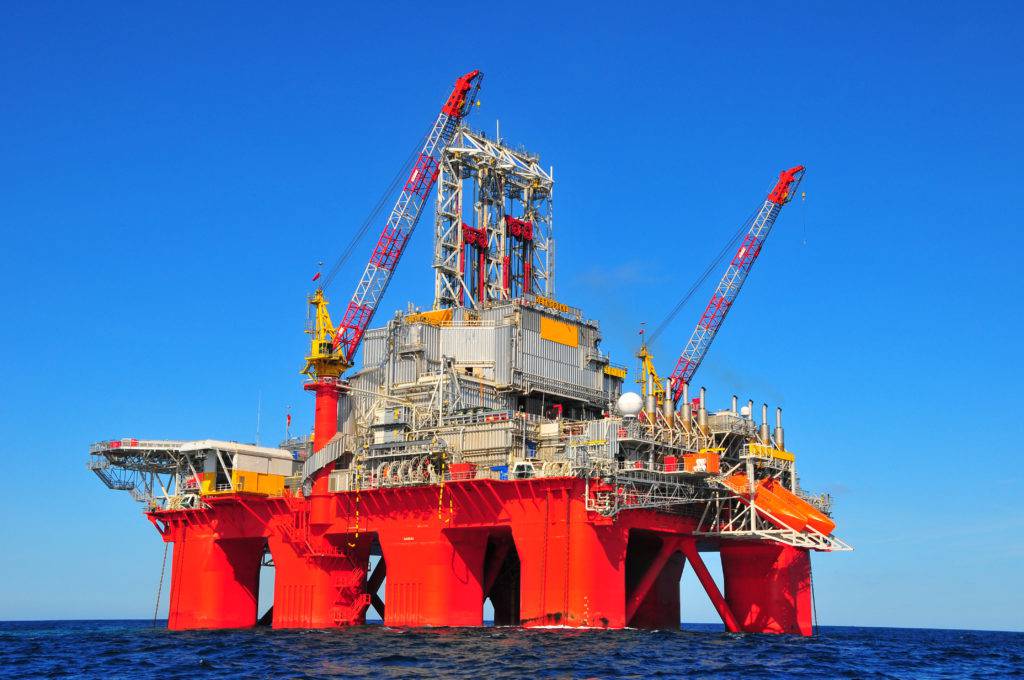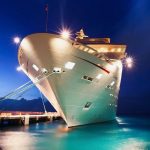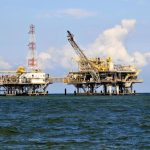Deepwater drilling, or Deep well drilling, is the process of creating holes by drilling rig for oil mining in deep sea. There are approximately 3400 deepwater wells in the Gulf of Mexico with depths greater than 150 meters.
It has not been technologically and economically feasible for many years, but with rising oil prices, more companies are investing in this area.[4] Major companies working in this sector include Halliburton, Diamond Offshore, TransOcean, Geoservices, and Schlumberger. The deepwater gas and oil market is back on the rise after the 2010 Deepwater Horizon disaster, and total expenditure of around $35 billion per year and a total global CAPEX of $167 billion in the past four years.
Recent industry analysis by Visiongain has estimated that the total expenditure in the global deepwater infrastructure market would reach $145bn in 2011.
“Not all oil is accessible on land or in shallow water. You can find some oil deposits buried deep under the ocean floor.” …Using sonic equipment, oil companies determine the drilling sites most likely to produce oil. Then they use a mobile offshore drilling unit (MODU) to dig the initial well. Some units are converted into production rigs, meaning they switch from drilling for oil to capturing oil once it’s found. Most of the time, the oil company will replace the MODU with a more permanent oil production rig to capture oil.” …The MODU’s job is to drill down into the ocean’s floor to find oil deposits. The part of the drill that extends below the deck and through the water is called the riser. The riser allows for drilling fluids to move between the floor and the rig. Engineers lower a drill string – a series of pipes designed to drill down to the oil deposit – through the riser.”
In the Deepwater Horizon oil spill of 2010, a large explosion occurred killing workers and spilling oil into the Gulf of Mexico while a BP oil rig was drilling in deep waters.
“…Despite the risks, the deepwater drilling trend is spreading in the Mediterranean and off the coast of East Africa after a string of huge discoveries of natural gas.”[8]
“The reason for the resumption of such drilling, analysts say, is continuing high demand for energy worldwide.”
History
A Chinese ceramic model of a well with a water pulley system, excavated from a tomb of the Han Dynasty (202 BC – 220 AD) period
Some of the earliest evidence of water wells are located in China. The Chinese discovered and made extensive use of deep drilled groundwater for drinking. The Chinese text The Book of Changes, originally a divination text of the Western Zhou dynasty (1046 -771 BC), contains an entry describing how the ancient Chinese maintained their wells and protected their sources of water.[9] Archaeological evidence and old Chinese documents reveal that the prehistoric and ancient Chinese had the aptitude and skills for digging deep water wells for drinking water as early as 6000 to 7000 years ago. A well excavated at the Hemedu excavation site was believed to have been built during the Neolithic era. The well was cased by four rows of logs with a square frame attached to them at the top of the well. 60 additional tile wells southwest of Beijing are also believed to have been built around 600 BC for drinking and irrigation
Types of deepwater drilling facilities
Drilling in deep waters can be performed by two main types of mobile deepwater drilling rigs: semi-submersible drilling rigs and drillships. Drilling can also be performed from a fixed-position installation such as a fixed platform, or a floating platform, such as a spar platform, a tension-leg platform, or a semi-submersible production platform.
Fixed Platform – A Fixed Platform consists of a tall, (usually) steel structure that supports a deck. Because the Fixed Platform is anchored to the sea floor, it is very costly to build. This type of platform can be installed in water depth up to 500 meters (1,600 feet).
Jack-Up Rig – Jack-up rigs are mobile units with a floating hull that can be moved around; once arrived to the desired location, the legs are lowered to the sea floor and locked into place. Then the platform is raised up out of the water. That makes this type of rig safer to work on, because weather and waves are not an issue.
Compliant Tower Platform – A compliant tower is a particular type of fixed platform. Both are anchored to the sea floor and both work places are above the water surface. However, the compliant tower is taller and narrower, and can operate up to 1 kilometer (3,000 feet) water depth.
Semi-Submersible Production Platform – This platform is buoyant, meaning the bulk of it is floating above the surface. However, the well head is typically located on the sea floor, so extra precautions must be made to prevent a leak. A contributing cause to the oil spill disaster of 2010 was a failure of the leak-preventing system. These rigs can operate anywhere from 200 to 2,000 meters (660 to 6,560 feet) below the surface.
Tension-Leg Platform – The Tension-leg Platform consists of a floating structure, held in place by tendons that run down to the sea floor. These rigs drill smaller deposits in narrower areas, meaning this is a low-cost way to get a little oil, which attracts many companies. These rigs can drill anywhere from 200 to 1,200 meters (660 to 3,940 feet) below the surface.
Subsea System – Subsea Systems are actually wellheads, which sit on the sea floor and extract oil straight from the ground. They use pipes to force the oil back up to the surface, and can siphon oil to nearby platform rigs, a ship overhead, a local production hub, or even a faraway onshore site. This makes the Subsea system very versatile and a popular choice for companies.
Spar Platform – Spar Platforms use a large cylinder to support the floating deck from the sea floor. On average, about 90% of the Spar Platform’s structure is underwater. Most Spar Platforms are used up to depths of 1 kilometer (3,000 feet), but new technology can extend them to function up to 3,500 meters (11,500 feet) below the surface. That makes it one of the deepest drilling rigs in use today.



Comments are closed